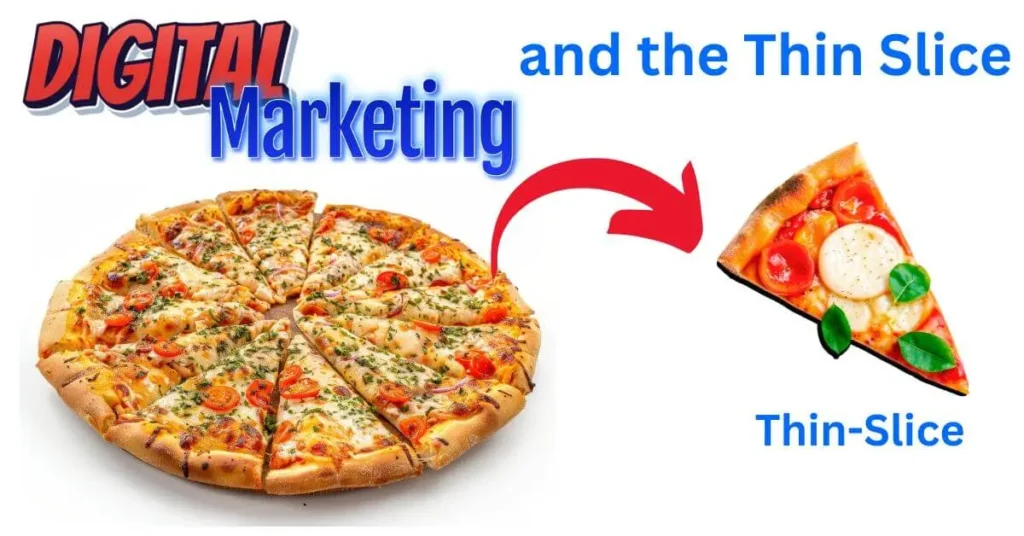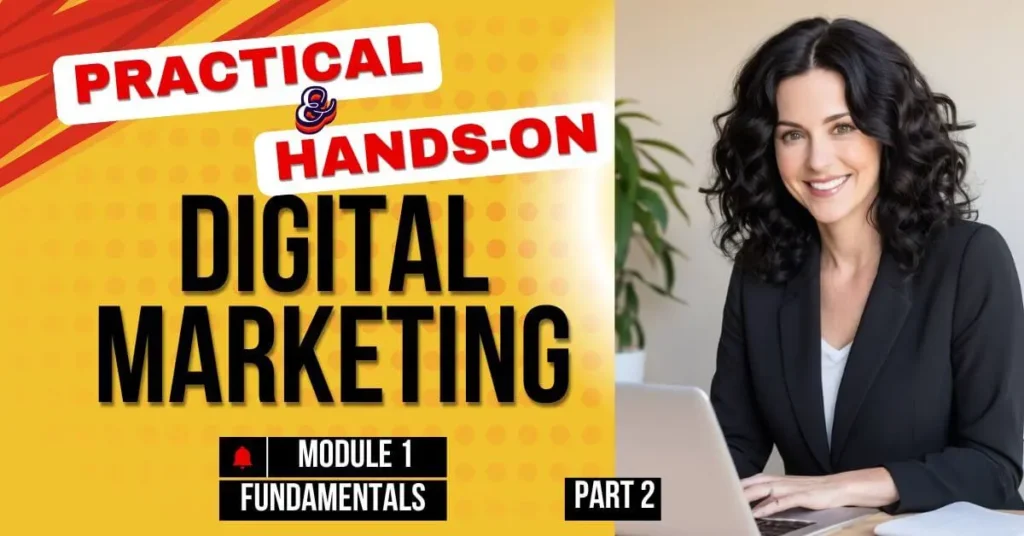Welcome to the world of digital marketing! In this module, we are exploring why digital marketing matters and how to create effective strategies in today’s online world. This is Part 2 of the Blog Post for Module 1 (M1-FUNDAMENTALS OF DIGITAL MARKETING ). We will continue from M1.7.
This blog post has been divided in to 3 parts for your easy reading, easy navigation and faster response. If you have not read Part 1 click the links below to read it first and then come back to this post (part 2).
Go to Part 1 from here.
M 1.7: The TCERO Model: A Comprehensive & STRUCTURED Approach to Digital Marketing
In the ever-evolving landscape of digital marketing, businesses need a structured approach to navigate the complexities of online engagement and customer retention. The TCERO model, an extension of the well-established TCEO framework, offers a comprehensive strategy that encompasses the entire customer journey. This blog post will explore the five pillars of the TCERO model: Think, Create, Engage, Retain, and Optimize.
The TCERO model offers a comprehensive approach to digital marketing, encompassing five key components:
- Think: This initial phase involves strategic planning, market research, and developing consumer insights to lay the foundation for your digital marketing efforts.
- Create: Here, concepts are brought to life through the development of digital assets, content creation, and platform design to engage your target audience effectively.
- Engage: This stage focuses on implementing strategies to connect with your audience, including SEO, social media marketing, and email campaigns to drive traffic and build relationships.
- Retain: A crucial addition to the model, this phase emphasizes building customer loyalty through personalized experiences, loyalty programs, and ongoing value delivery.
- Optimize: The final, ongoing component involves continuous improvement through data analytics, A/B testing, and iterative refinement of your digital marketing strategies.
For a more detailed exploration of the TCERO model and its application in digital marketing, check out our comprehensive blog post here.
Citations:
- https://www.linkedin.com/pulse/tceo-think-create-engage-optimize-siddhesh-kadam
- https://sidonlineacademy.blogspot.com/2017/02/the-tceo-model.html
- https://www.linkedin.com/pulse/tceo-model-digital-marketing-tanay-nagar
- https://www.goconqr.com/en/mindmap/5986380/tceo-model
- https://www.wsiworld.com/blog/6-essential-elements-successful-digital-marketing-strategy
- https://www.bostondigital.com/insights/what-digital-marketing-3-basic-components
- https://www.youtube.com/watch?v=b8Z62p7azoA
- https://www.coursehero.com/sitemap/schools/38-Centennial-College/courses/5148701-MKTG229/
WATCH THE VIDEO from 21:17 (Time) Here
M 1.7E: Exercise 2: Understanding Business Marketing- Strategy Exercise
Exercise: Understanding the TCERO Model for a Green Cleaning Startup
Scenario: Here’s a new exercise focused on a startup eco-friendly cleaning service:
You and your partners have decided to start an eco-friendly cleaning service called “GreenClean” in a bustling urban area. You have $50,000 in initial funding and aim to provide residential and small business cleaning using only environmentally friendly products and methods.
Key Information:
- Target market: Environmentally conscious urban professionals and small businesses
- City population: 500,000 with 20% growth expected in the next 2 years
- 75% of target market uses smartphones for service bookings
- Competitors mostly use traditional cleaning methods and products
- You plan to develop a mobile app for easy booking and service management
- Goal: Achieve 200 regular clients within the first year
- Break-even point: $8,000 monthly revenue
Quiz: Match the following components to the appropriate TCERO category:
Designing eco-friendly uniforms for staff
Creating informative content about green cleaning benefits
Analyzing target market demographics
Researching eco-friendly cleaning products
Identifying potential partnerships with local eco-friendly stores
Developing a user-friendly mobile app for service booking
Offering seasonal deep-cleaning packages to regular clients
Tracking customer acquisition cost
Monitoring app download and usage rates
Analyzing customer feedback and satisfaction scores
Launching targeted social media campaigns
Offering referral discounts to existing customers
Participating in local environmental events
Implementing a loyalty program with eco-friendly product rewards
Sending personalized follow-up emails after each service
This exercise allows you to understand how each component of the TCERO model applies to a real-world business scenario.
Answers: Down Below!
M 1.8: The Power of Digital Marketing
Digital marketing has revolutionized the way businesses connect with consumers, offering unprecedented reach, engagement, and measurability. Let’s explore the advantages of digital marketing, key concepts that highlight its power, and how consumer engagement has evolved in the digital age.
Understanding the Power of Digital Marketing

Digital marketing enables businesses to reach audiences at a depth and scale that traditional marketing could never achieve. Below are four key concepts that illustrate its transformative power:
1. Rethink Real-Time
Real-time interaction allows businesses to engage with customers at the exact moment they are most receptive. Through digital channels, brands can deliver value instantly without being intrusive. For example:
- Social Media Engagement: Brands like Wendy’s use Twitter to respond humorously to customer tweets in real time.
- Live Chat Support: Companies like Amazon provide immediate assistance through chatbots or customer service representatives.
2. The Power of Thin-Slicing
Thin-slicing refers to making quick, accurate judgments based on minimal information. In digital marketing:
- Social media platforms allow users to form impressions of brands within seconds based on posts, visuals, and interactions.
- For example, Airbnb’s clean and inviting interface quickly conveys trustworthiness and professionalism.
3. Measurable Analytics
Digital marketing provides unparalleled access to data that can measure campaign success and guide decision-making:
- Metrics: Click-through rates (CTR), conversion rates, and customer lifetime value (CLV) are examples of measurable KPIs.
- Tools: Platforms like Google Analytics and HubSpot allow marketers to track user behavior and optimize campaigns.
4. Digital Entrepreneurship
Digital entrepreneurship leverages technology to create innovative business models. Examples include:
- Uber: Revolutionized transportation by connecting riders with drivers via a mobile app.
- Airbnb: Disrupted the hospitality industry by enabling property owners to rent out spaces.
- SkipTheDishes: Transformed food delivery services by connecting restaurants with customers through an app.
- Other examples: Shopify (eCommerce), Canva (digital design), Coursera (online education).
Engagement in the Age of Digital Marketing
Consumers today spend significant time connected to digital devices. Studies show:
- Canadians average 10 hours and 24 minutes of media consumption daily (Briggs, 2020).
- Americans spend 12.2 hours daily on media, with digital media consumption outpacing traditional media by 19.5% (Watson, 2020).
This shift has profoundly impacted how brands engage with their audiences.
Rethinking Engagement
The evolution of consumer engagement is evident when comparing past and present marketing strategies:
Then: Traditional Celebrity Endorsements
In the 1980s, celebrity endorsements were one-way communication campaigns designed for mass appeal. For example:
- Michael Jackson’s Pepsi commercial in 1984 was iconic but lacked interactivity or measurable impact (Watch here).
Now: Interactive Celebrity Endorsements
Modern celebrity endorsements emphasize real-time interaction and measurable results:
- Drake’s Instagram account showcases partnerships with brands like Nike through engaging posts that allow fans to comment, share, and interact.
- Examples include Cristiano Ronaldo promoting Clear Shampoo via Instagram Stories or Kylie Jenner launching Kylie Cosmetics on social media platforms.
Case Study Questions
1. How does real-time interaction benefit brands?
Answer: Real-time interaction allows brands to engage with customers at critical moments, fostering trust and satisfaction while increasing conversion rates.
2. What is thin-slicing in digital marketing?
Answer: Thin-slicing refers to making quick judgments based on minimal information, such as forming impressions about a brand from its social media presence or website design.
3. Why are measurable analytics important in digital marketing?
Answer: Measurable analytics help marketers track campaign performance, identify areas for improvement, and make data-driven decisions to optimize ROI.
4. How has digital entrepreneurship transformed industries?
Answer: Digital entrepreneurship has disrupted traditional industries by creating innovative platforms like Uber for transportation, Airbnb for hospitality, and Shopify for eCommerce.
5. How has consumer engagement shifted from traditional to modern methods?
Answer: Traditional methods relied on one-way communication (e.g., TV ads), while modern methods focus on interactive, real-time engagement through social media and other digital platforms.
References (APA Style)
- Briggs, A. (2020). Media Consumption in Canada. Media Trends Report.
- Watson, A. (2020). Media Consumption in the U.S. Statista Research Department.
- Stokes, R., & The Creative Minds of Red & Yellow. (2018). eMarketing: The Essential Guide to Marketing in a Digital World (6th ed.). Quirk eMarketing.
- Simplilearn Team. (2024). 14 Benefits of Digital Marketing in 2025. Retrieved from https://simplilearn.com
- TheeDigital Team. (2025). Digital Marketing Trends 2025. Retrieved from https://theedigital.com
- Media Avatar Mena Team. (2023). Thin-Slicing the Customer Experience. Retrieved from https://mediaavataarme.com
- Bari Lemberger (2024). The Power of a Thin Slice. LinkedIn Pulse.
- Rethink Canada Team. (2021). How Does Rethink Canada Use Media Monitoring? Retrieved from https://brand24.com/case-study/rethink-canada
M 1.9: Digital Marketing and the Thin Slice
The concept of “thin-slicing” has significant implications for digital marketing, offering marketers a powerful tool to understand and influence consumer behavior in the fast-paced online environment.
What is a Thin Slice?
Thin-slicing refers to the human ability to make rapid, accurate judgments based on minimal information or brief exposures. This concept, originally from psychology, has become crucial in marketing, especially in the digital realm[1].

The Thin Slice and Digital Marketing
Research on thin-slice consumer behavior in digital contexts has revealed several key insights:
- Quick Judgments: 80% of web surfers spend only a few seconds on a website before moving on[4].
- Limited Exploration: Most consumers don’t look beyond the first two pages of a site[4].
- Trustworthiness Assessment: Users form rapid judgments about a site’s trustworthiness based on perceived competence, integrity, and attractiveness[4].
- Accuracy of Snap Decisions: These quick judgments often prove to be surprisingly accurate[4].
Implications for Digital Marketers
- First Impressions Matter: Websites and digital content must make an immediate positive impact[5].
- Clear Value Proposition: Your website should communicate what you do and offer within 20 seconds[5].
- Beyond Advertising: Focus on building trust through valuable content and interactions[5].
- User Experience Design: Prioritize intuitive navigation and appealing visuals to make a positive first impression[3].
Personas and Thin Slicing
Digital marketers can leverage thin-slicing to create more accurate and responsive customer profiles:
- Real-Time Data: Gather information on consumer behavior as it happens[9].
- Rapid Persona Development: Use quick insights to refine target audience profiles[9].
- Adaptive Marketing: Adjust strategies based on immediate consumer responses[9].
Thin-Slicing in Action: A Marketing Perspective
Thin-slicing in marketing involves understanding how consumers make rapid decisions based on limited information. Here’s a brief overview:
- Unconscious Pattern Recognition: Our brains quickly identify patterns in situations and behaviors.
- Swift Decision-Making: This leads to rapid judgments without extensive deliberation.
- Marketing Application: Marketers design strategies that appeal to these immediate perceptions.
- Consumer Behavior Impact: Initial impressions significantly influence purchasing decisions.
- Crucial First Moments: The first few seconds of exposure to a product or ad can shape overall perception.
By understanding and leveraging thin-slicing, digital marketers can create more effective, engaging content that resonates with consumers in the brief moments they spend interacting with a brand online.
References:
[1] Stephan Spencer. (2019). “Thin Slicing”, a Powerful SEO Tactic.[4] Peracchio, L., & Luna, D. (2006). The Role of Thin-Slice Judgments in Consumer Psychology.[5] Springett, E. (2016). Thin slicing your marketing? If not, you should be, here’s how…[9] Media-Avataar Mena. (2023). Thin-Slicing the Customer Experience.
5- Day ONLINE BUSINESS BUILDER CHALLENGE
M 1.7E: ANSWERS FOR TECERO MODEL EXERCISE
Practice the TCERO model using different business scenarios. Here’s a new exercise focused on a startup eco-friendly cleaning service:
Answer for Exercise: Understanding the TCERO Model for a Green Cleaning Startup
Scenario:
You and your partners have decided to start an eco-friendly cleaning service called “GreenClean” in a bustling urban area. You have $50,000 in initial funding and aim to provide residential and small business cleaning using only environmentally friendly products and methods.
Key Information:
- Target market: Environmentally conscious urban professionals and small businesses
- City population: 500,000 with 20% growth expected in the next 2 years
- 75% of target market uses smartphones for service bookings
- Competitors mostly use traditional cleaning methods and products
- You plan to develop a mobile app for easy booking and service management
- Goal: Achieve 200 regular clients within the first year
- Break-even point: $8,000 monthly revenue
Quiz: Match the following components to the appropriate TCERO category:
Think:
- Analyzing target market demographics
- Researching eco-friendly cleaning products
- Identifying potential partnerships with local eco-friendly stores
Create:
- Developing a user-friendly mobile app for service booking
- Designing eco-friendly uniforms for staff
- Creating informative content about green cleaning benefits
Engage:
- Launching targeted social media campaigns
- Offering referral discounts to existing customers
- Participating in local environmental events
Retain:
- Implementing a loyalty program with eco-friendly product rewards
- Sending personalized follow-up emails after each service
- Offering seasonal deep-cleaning packages to regular clients
Optimize:
- Tracking customer acquisition cost
- Monitoring app download and usage rates
- Analyzing customer feedback and satisfaction scores
This exercise allowed You the learners to understand how each component of the TCERO model applies to a real-world business scenario. You can create a Quiz or a Quiz video where your students or participants match these components to the correct TCERO category, and provide the answers.
A Bonus Tip: Digital Marketing Skills-Fast Track, Earn while Learning
If you want to learn Digital Marketing skills through a fast track and earn a commission here is a way to do that. Join Legendary Marketer 5 Day Business Builder Challenge. You can earn while learning.
They’re providing EVERY SINGLE STUDENT of the 5-Day Learn Launch Lead Challenge a dedicated advisor to go through the challenge WITH you.
I followed that and now I am an affiliate. If you sign up with the following link I may get a commission. No extra cost to you. Instead you may get discounts. The starter course is just $5. Go through the program with an advisor. It’s a great opportunity and beneficial.
Note: This is the end of Part 2 of Module 1. Module 1 is the foundation. As it is called MODULE 1: FUNDAMENTALS OF DIGITAL MARKETING, this module set the foundation. As you may remember we have 3 parts for this module. If you haven’t read previous Part 1 please check the following link to go there. The link to go to Part 3 also can be found down below. Thank you so much for reading my blog posts and going through these lessons.
Next Topic is….
M 1.10: MEASURABILITY AND ANALYTICS
Go to part 1 from here.
Go to part 3 from here. Just Click here to go to part 3.


